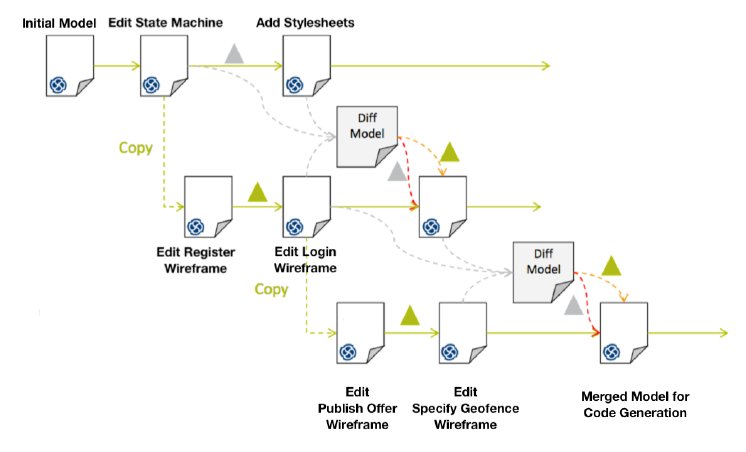Dr Konrad Wieland, CEO of LieberLieber: "It is always surprising for us what Enterprise Architect and LemonTree are used for. With our Californian partner Parallel Agile, we are once again entering new territory. CodeBot automatically develops web applications from Enterprise Architect models, whose different versions are managed with LemonTree during the development process. This speeds up many areas of software development considerably and the benefits are great. We wish Parallel Agile much success in the market with its revolutionary approach!" CodeBot and LemonTree combine revolutionary low-code full-stack application generation from UML models with state-of-the-art model management and version control to provide development teams with even greater power.
The UML model is the source code
CodeBot is a full-stack application generator that creates a database, user interface code and an API that connects screens to the database in minutes. CodeBot's low-code approach enables development teams to work in parallel and quickly deliver working web applications generated from Enterprise Architect UML models. The rapid iteration between model and working code enables UX optimisation and refinement, which is always driven by ongoing customer feedback.
With LemonTree, each of these development steps (iteration) can be managed and version controlled, making it easy for developers to work in parallel. In order to be able to easily use the synergies of the products, CodeBot and LemonTree are now offered at a package price.
Parallel Agile founder and CEO, Doug Rosenberg states: “CodeBot’s ability to generate and deploy complete full stack web applications means that the UML model is the source code. When the model is the code, it’s essential to use state-of-the-art version control tools and techniques. We’re excited to be partnering with LieberLieber and to be able to offer a product bundle that includes Lemon Tree and CodeBot together.”
Agile development with models
As the name suggests, Parallel Agile supports the parallel agile process where each developer is assigned their own use case. This allows many people to work on an application at the same time and the systems evolve quickly. However, as the gaps between model, code and finished systems become smaller and smaller due to the step-by-step approach, it becomes particularly important to use version control strategies for the emerging Enterprise Architect models. LemonTree provides a breakthrough in model management, allowing Enterprise Architect models to be easily stored and versioned in Git repositories, with full support for feature branches and merging of different model versions. Daniel Siegl, responsible for partner support and the US market at LieberLieber: "I have met Doug Rosenberg at many events and know him to be an avid Enterprise Architect devotee and an exceptional inventor. With the development of CodeBot, he and his team have achieved a particularly promising step. We are pleased to be able to contribute to the growing success of the new product package with LemonTree. The list of potential users is long and we will do our utmost to support the joint market success."
Learn more about LemonTree:
https://www.lieberlieber.com/lemontree/de/
LemonTree 3.0 Video:
https://youtu.be/bNj9EqobynM
Learn more about Parallel Agile and CodeBot:
http://www.parallelagile.com
About Parallel Agile
The agile movement has transformed software development, but not without bringing its own set of problems. Agile methods speed up software development, but encounter problems with reliability, scalability, and evolvability.
Traditional agile approaches are difficult for projects involving multiple organizations, over-20 developers, safety- and security critical systems, and interoperability with independently-evolving systems. Examples of large-project critical difficulties are daily stand-up meetings, 2-week sprints, single co-located customer representatives, projects with high personnel turnover, reliance on tacit interpersonal knowledge vs. documents, and need for rapid, continuous development and deployment.
Maximum team size on agile teams is limited, so there is a “speed limit” on how fast agile teams can deliver. It’s widely thought to be impossible to integrate the work of many developers writing software in parallel. But what if we could do exactly that? Instead of endless 2-week sprints and little planning, with Parallel Agile® we do more planning and can scale by adding many more developers, instead of stretching out the calendar. By leveraging code generation automation, you can have the benefits of both agile and model-driven development, with none of the limitations.
www.parallelagile.com






